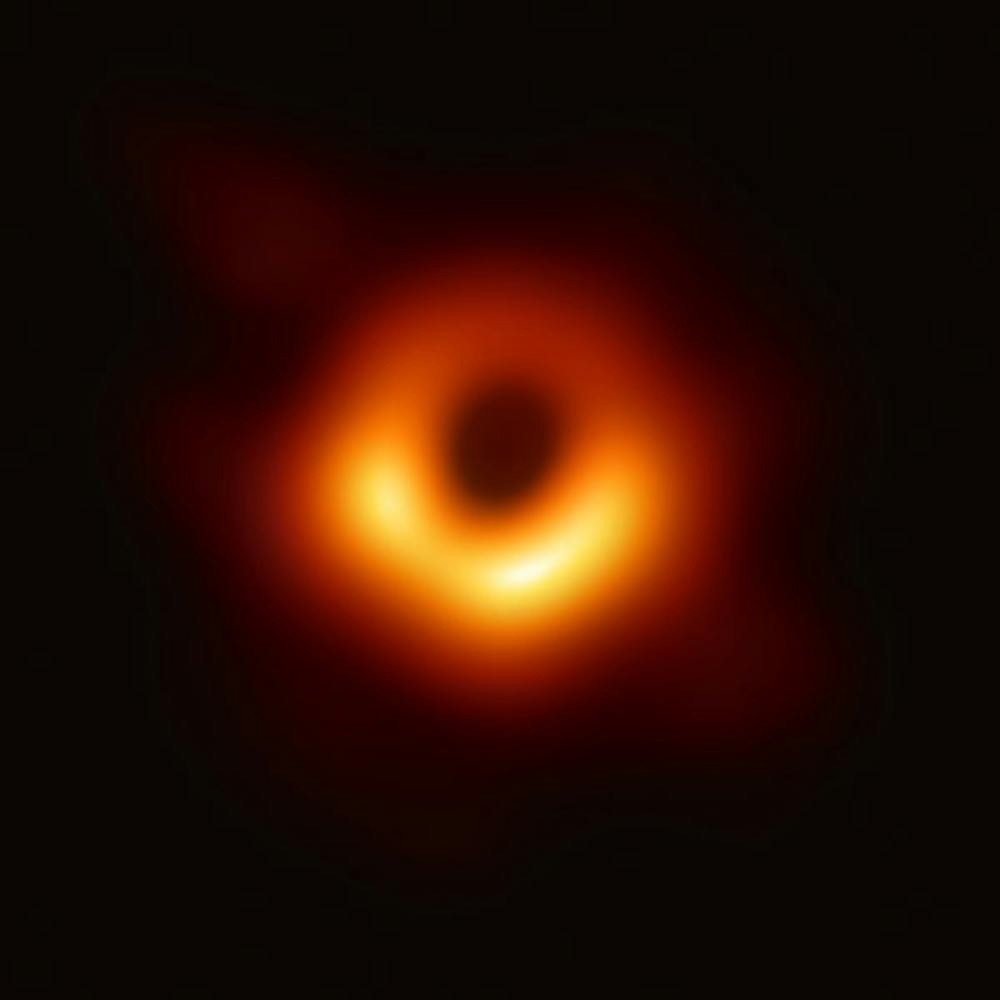Lately there has been a buzz in the field of astronomy. On April 10, a network of telescopes all across the globe was used to produce the first image of a supermassive black hole and its shadow located in the Messier 87 galaxy.
Black holes are comprised of dense regions of matter that create massive, strong gravitational fields that draw in everything around them. They also have the ability to super-heat surrounding material and possibly warp spacetime.
A black hole is visualized through the superheating of material that accumulates around it. When the material is heated, it nearly reaches the speed of light. Then gravity bends the light band which results in a photon ring such as the one appearing in pictures all across the internet.
This image is the first visual evidence for the existence of black holes.
The network of eight telescopes which captured the image is called the Event Horizon Telescope (EHT). The EHT virtually linked images from the eight telescopes to produce, in effect, an Earth-sized telescope.
In a press release, Paul T.P. Ho, an Event Horizon Telescope board member and the director of the East Asian Observatory, explained that he was heartened by the image of the black hole and its shadow because it matched scientists’ theoretical predictions.
“Once we were sure we had imaged the shadow, we could compare our observations to extensive computer models that include the physics of warped space, superheated matter and strong magnetic fields,” he said. “Many of the features of the observed image match our theoretical understanding surprisingly well. This makes us confident about the interpretation of our observations, including our estimation of the black hole’s mass.”
The successful image capture of a black hole is not the only significant discovery in the field of astronomy.
Earlier in the month scientists found that an iron and nickel rich planet fragment survived the death of the star it orbits.
Astronomers from the University of Warwick employed the Gran Telescopio Canarias in La Palma to analyze the debris disk orbiting a white dwarf about 410 light-years away. The size of the planet fragment might be comparable to the biggest asteroids ever known in our solar system.
In a press release, Christopher Manser, the lead author and a research fellow in the Department of Physics at Warwick, elaborated on the particular characteristics of the asteroid and the white dwarf it orbits.
Before its death, the star was called SDSS J122859.93+104032.9. According to Manser, the star would have been approximately the size of two solar masses. The remnants of its death is a white dwarf. The white dwarf is significantly smaller than its host star but it is about 70 percent of the mass of the sun.
The small size, combined with the increased mass, makes the white dwarf very dense. The large density contributes to an increased gravitational pull.
“The white dwarf’s gravity is so strong — about 100,000 times that of the earth’s — that a typical asteroid will be ripped apart by gravitational forces if it passes too close to the white dwarf,“ Manser said.
Scientists postulated that planets or asteroids which orbit a white dwarf have to be a certain distance away from the dwarf to avoid being drawn in and “shredded” by the dwarf’s gravitational pull.
The orbit of the iron and nickel rich planet fragment, called a planetesimal, was closer to the star than scientists previously thought was possible.
Scientists believe that these observations hint at the possible state of our solar system six billion years in the future.
Some scientists believe that our sun will become a white dwarf which is orbited by Mars, Jupiter, Saturn, the outer planets, asteroids and comets.
The iron and nickel rich planet fragment is only the second planetesimal discovered thus far. Manser plans to use innovative spectroscopic method developed in this research study to investigate other solar systems.
“We are confident that we will discover additional planetesimals orbiting white dwarfs, which will then allow us to learn more about their general properties,“ he said.





